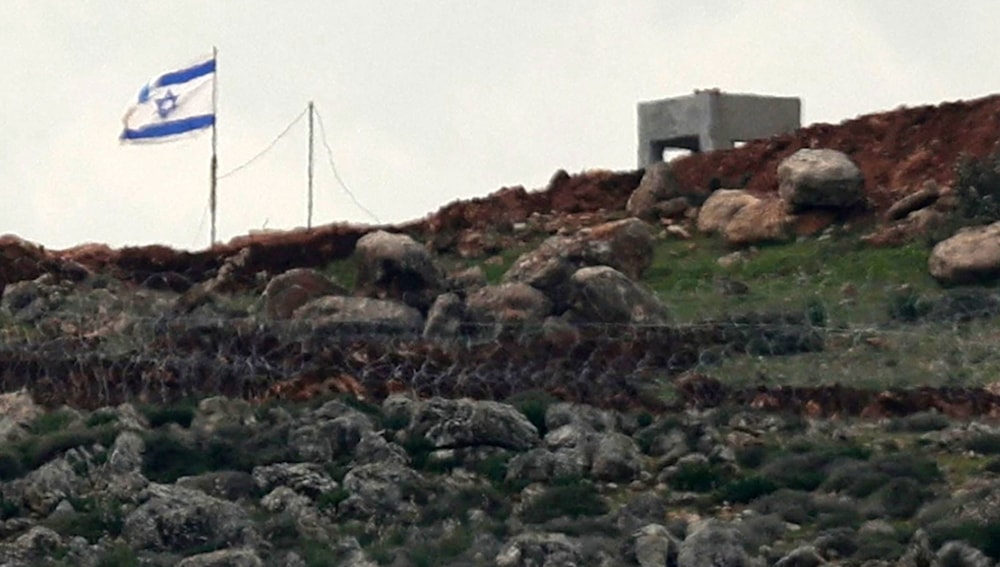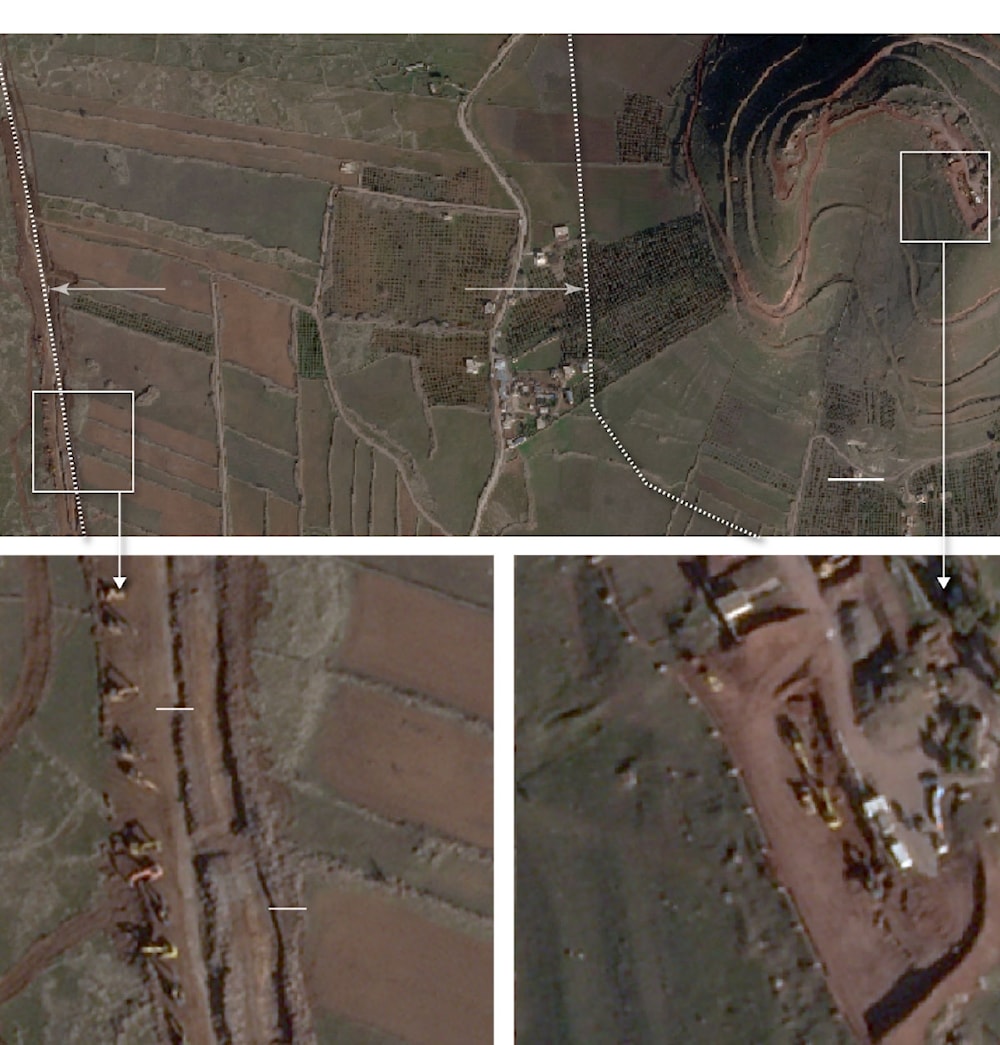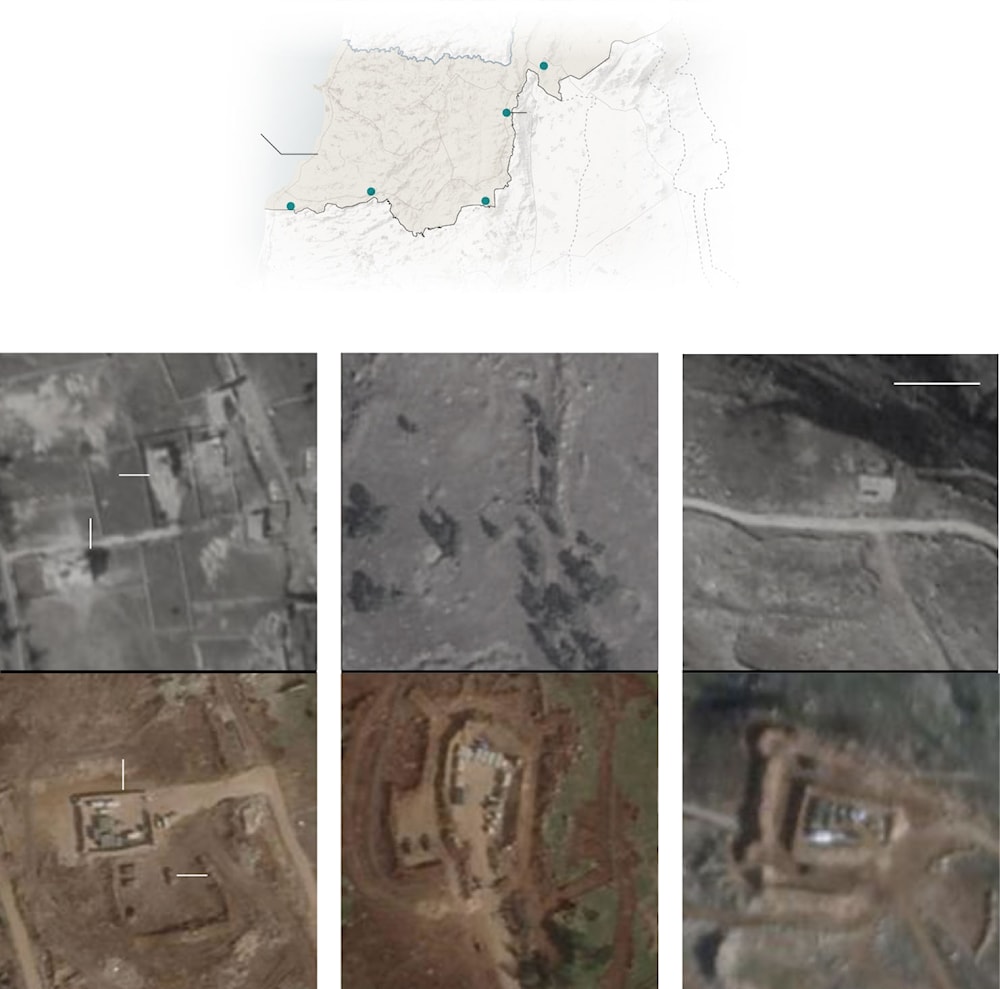New outposts signal long-term Israeli occupation in Lebanon, Syria
Zionist forces have occupied areas within the demilitarized zone established after the 1973 war and have also pushed beyond it, taking control of strategic high ground such as the hills above Kodana.
-

A photo taken from the southern Lebanese village of Sarada shows the Israeli flag flying over the Al-Hamames hills facing the Israeli settlement of Metulah on Feb. 19, 2025 (AFP)
The New York Times on Monday revealed that the Zionist regime is entrenching its military presence in both Syria and Lebanon, building a network of outposts and infrastructure that signals a potential long-term occupation of neighboring lands.
The report notes that the occupation claims these deployments are a defensive measure. Yet, no timeline has been provided for their withdrawal, and instead, construction projects suggest an enduring military foothold in areas where resistance groups continue to challenge Israeli expansionism.
Satellite imagery, eyewitness accounts, and UN sources confirm the establishment of fortified positions, roads, surveillance towers, and military housing in illegally occupied lands. In the Syrian town of Jubata al-Khashab, heavy machinery has been spotted alongside new barriers and defensive walls, underscoring the scale of the ongoing land grab.
-

Source: Planet Labs
Zionist forces have occupied areas within the so-called demilitarized zone established after the 1973 war and have also pushed beyond it, taking control of strategic high ground such as the hills above Kodana.
"They say it's temporary, but based on what they're building, it seems they're preparing to stay for a while," said Omar Tahan, a local figure from Kodana.
A similar pattern is visible in southern Lebanon. Despite a cease-fire agreement reached in late November which stipulated Israeli withdrawal, the regime continues to hold positions in at least five locations and disrupted the return of displaced people by continuously firing at them and destroying prefabricated homes. Rather than withdrawing, it has escalated its military build-up and attacks on Lebanese territory.
Entrenched Occupation
Following the ceasefire in Lebanon, Israeli aggression escalated along the blue line, as the Israelis unleashed air and artillery assaults on southern Lebanon — despite Hezbollah's commitment to the truce. While displaced Lebanese families are steadily returning to their homes, Zionist settlers have refrained from doing the same, a reflection of the regime's inability to guarantee security within its settlements.
Last summer, Israeli attacks claimed the lives of several Hezbollah commanders, but the resistance remains firm. Lebanese authorities report that around 4,000 people were killed and over 16,000 injured in what many see as a punitive campaign against Lebanon.
In Syria, the Israelis moved aggressively to fortify their hold, establishing at least nine outposts across the south. Citing distrust in Syria's newly formed government — which came to power after the ousting of Bashar al-Assad — Tel Aviv has expanded its reach into formerly demilitarized zones, backed by continued airstrikes.
Though Syria's interim president, Ahmed al-Shara, reaffirmed Damascus's commitment to the 1974 cease-fire, Israeli Prime Minister Benjamin Netanyahu dismissed the agreement, declaring it void and calling for the "complete demilitarization" of southern Syria.
Read more: Macron urges Netanyahu to halt Gaza bombardment, restore ceasefire
Israeli Security Minister Israel Katz recently admitted that the forces are planning to remain "for an indefinite period." Katz also announced that the Israelis would begin issuing work permits to Syrians for jobs in the occupied Golan Heights — territory illegally seized in 1967 and annexed in defiance of international law.
In recent weeks, new military infrastructure has appeared near Quneitra and Hader. Trenches and concrete barriers are being dug near the Alpha Line, further entrenching Israeli control.
Across southern Lebanon, Israeli troops continue to hold their ground. At sites like Khiam, Markaba, Houla, Aitaroun, and Marwahin, satellite images have confirmed the construction of military bases, roads, and fortified compounds. In some cases, Israeli flags have been raised on Lebanese land even after the agreed withdrawal date passed — a symbolic assertion of continued occupation.
-

Source: Planet Labs

 4 Min Read
4 Min Read








